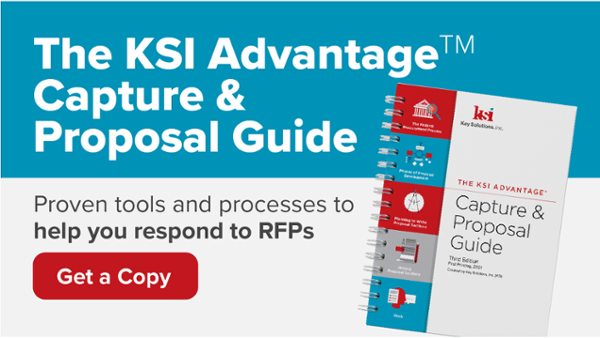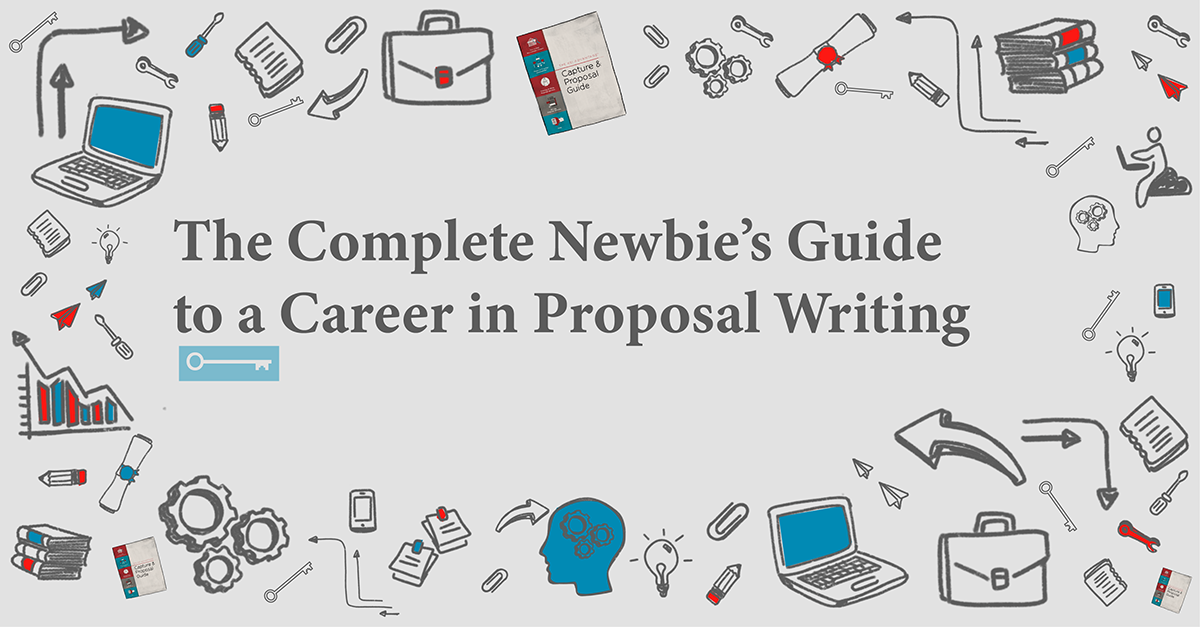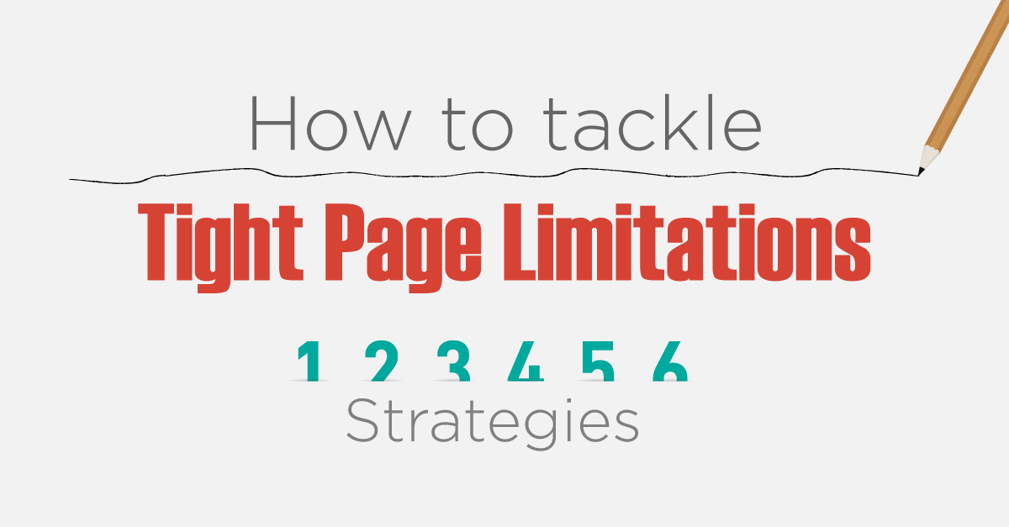
Tight page limitations are becoming a more frequent challenge as contracting officers continue to look for ways to streamline their acquisition processes.
When faced with tight page restrictions, we proposal writers often find ourselves struggling with trimming five pages of material into two pages of allocated space. However, sometimes the content we are working with is so long because it is simply overly wordy. Here are a few tricks for removing the waste:
- Use Active Voice
- Eliminate Redundancies
- Strip out Empty Words
- Simplify Your Word Choice
- Use Graphics and Tables Strategically
- Focus Your Text
1. Use Active Voice
With active voice, the subject of the sentence comes first and performs the action in the sentence. Active voice is more straightforward and concise than passive voice. It typically results in shorter, sharper sentences. So not only does it take up less real estate, it flows better and is easier to understand.
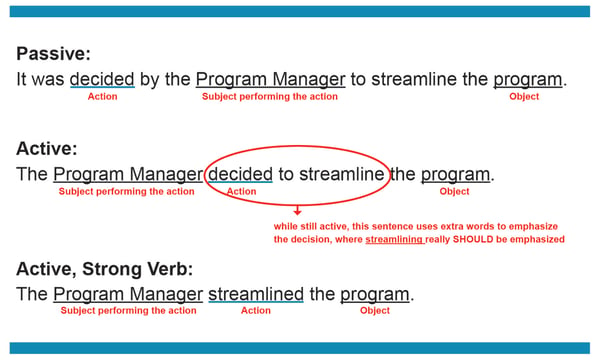
2. Eliminate Redundancies
Remove redundancies that take up extra space and don’t add value. Replace redundant phrases:
-
actual experience; replace with experience
-
advanced planning; replace with planning
-
close proximity; replace with proximity
-
consensus of opinion; replace with consensus
Concise writing makes your response clearer and easier to evaluate.
3. Strip out Empty Words
Avoid empty words such as high, numerous, and highly reliable. Substantiate all empty claims with proof points and metrics, quantified if possible. Also, avoid clichés that add no value; for example, world-class, best of breed, and silver bullet.
4. Simplify Your Word Choice
Writers sometimes feel the urge to add emphasis to their prose by using extra words or phrases that don’t contribute much to the meaning (and sometimes obscure it).
Consider the following swaps:
-
absolutely vital; replace with vital
-
quite unique; replace with unique
-
due to the fact that; replace with because
-
utilize/utilization; replace with use
-
in the amount of; replace with for
-
in the event of; replace with if
-
in order that; replace with for or so
-
commence; replace with start
Visit https://plainlanguage.gov/guidelines/words/use-simple-words-phrases/ for a more comprehensive list
5. Use Graphics and Tables Strategically
We’ve all heard the old adage, “A picture [or graphic] is worth a thousand words.”
If used correctly, graphics are compelling, easy to understand, informative, and help to communicate your message faster and more clearly than words alone. Graphics can help evaluators to easily read data, understand processes, and identify patterns or potential opportunities. Below is an example of a Feature and Benefits Table from the KSI Advantage© Capture & Proposal Guide.
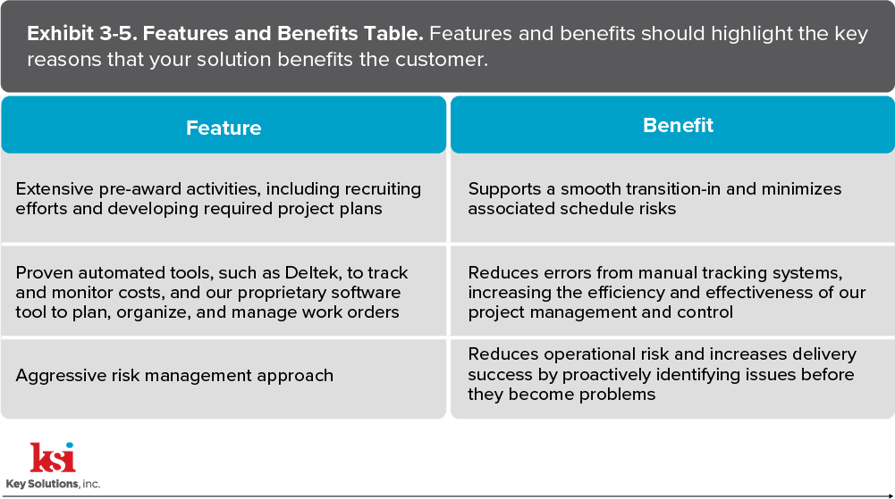
Graphics and tables typically also receive some font size relief—so if used appropriately and strategically, they can help to save you some valuable proposal real estate.
6. Focus Your Text
When page limitations are tight, it becomes even more critical to focus your text on the instructions and evaluation criteria.
Look for areas where the content strays to work in tangential proof points, and move the unfocused text to the more relevant section or sections. Frequently you’ll find that the proof points or content are already present in the more relevant sections and that you can just eliminate the text as redundant content. If you find that the content doesn’t really fit another section well, remove it completely since it does not support the proposal evaluation.
Conclusion
As tight page limitations become a more frequent challenge, we need to approach our proposals with a strategy for keeping our content lean.
By focusing on our text, using active voice, and simplifying our word choice, we’ll begin the revising process with shorter narratives. Going back and stripping out empty words, eliminating redundancies, and using graphics and tables strategically will help to tighten our content further. Not only will you find that your content is shorter, but you’ll find that these strategies actually help to make your content clearer.
If the evaluator actually understands what you are writing, that will help them award you the score that you actually deserve. In the end, though it might seem tedious, this trimming exercise can become a win-win situation for everyone involved.
This article was originally published by Ashley Kayes on Proposal Reflections.
Want to improve your writing skills? Check out our post A Comprehensive Guide to High-Quality Proposal Writing. For a more in-depth resource grab a copy of The KSI Advantage© Capture & Proposal Guide.



